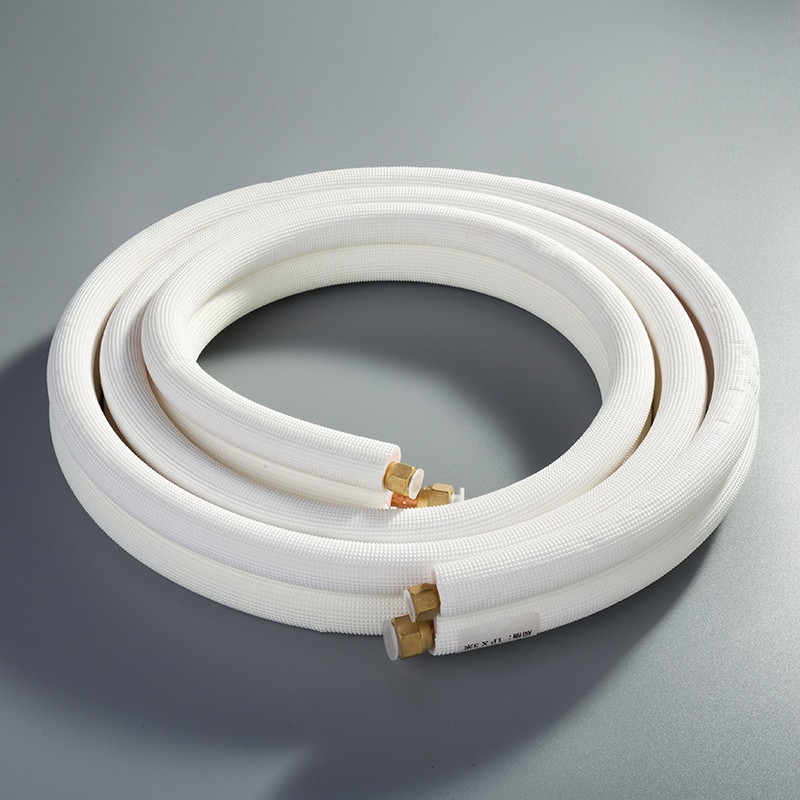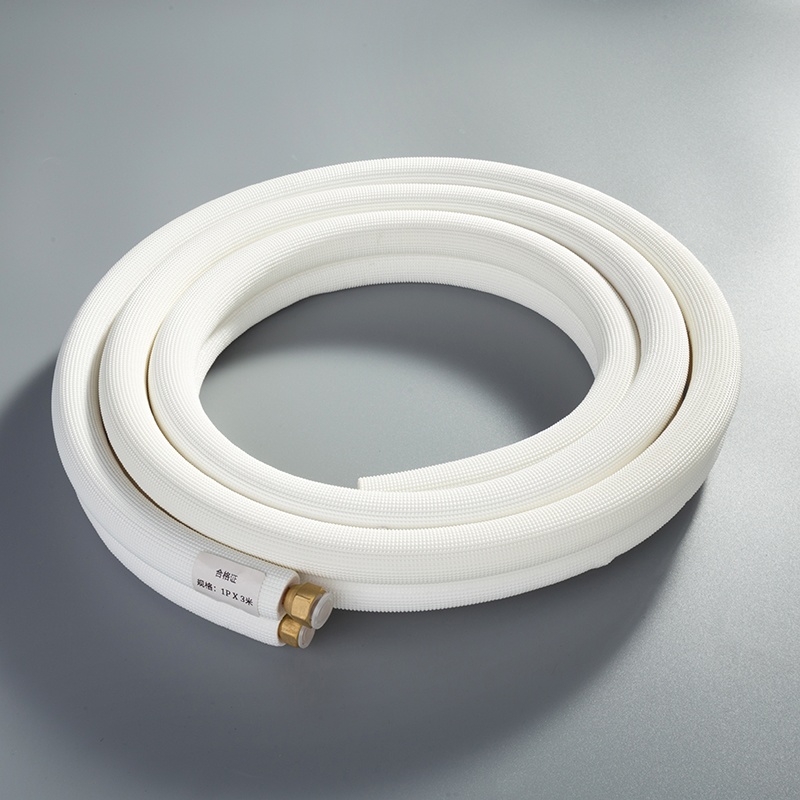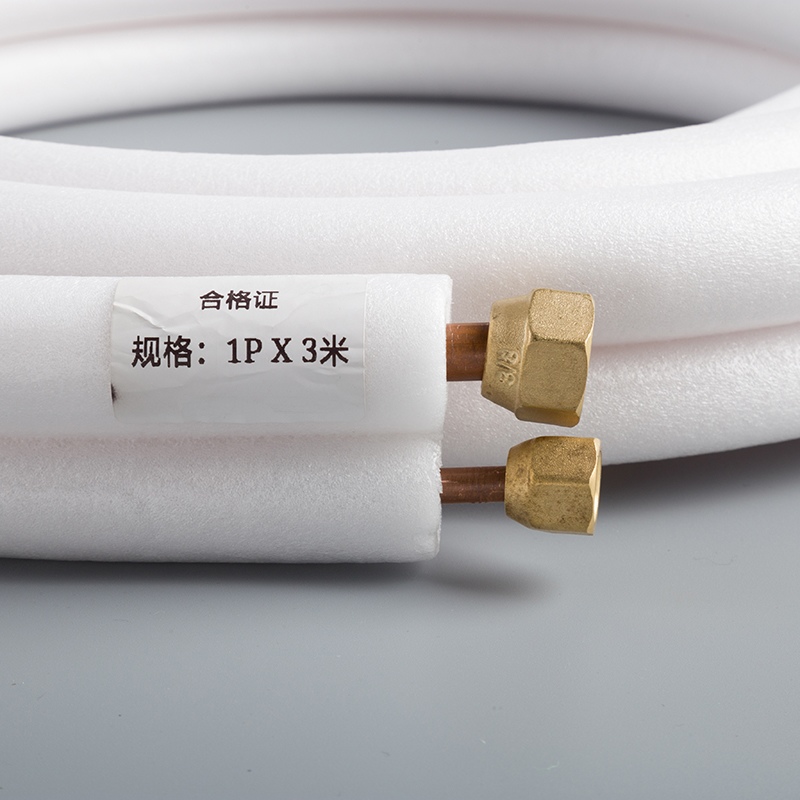What Types of Copper Pipes Are Used in Air Conditioning Systems

Copper pipes play a crucial role in air conditioning systems. Their durability and ability to handle refrigerants make them a reliable choice. You’ll find that copper pipes resist corrosion and transfer heat efficiently, which ensures energy savings and a longer system lifespan.
Key Properties of Copper:
Property | Description |
|---|---|
Thermal Conductivity | Copper transfers heat more effectively than aluminum or stainless steel. |
Corrosion Resistance | Copper forms a protective layer, preventing damage from refrigerants and chemicals. |
Durability | Copper withstands high pressures and extreme temperatures, ensuring reliability. |
These qualities make copper pipe used in AC systems the industry standard.
Key Takeaways
Copper pipes are important for AC systems because they last long and work well with refrigerants.
Type L copper pipes are great for home AC systems. They are affordable and work efficiently.
Insulated copper pipes save energy by stopping condensation and keeping cool air inside.
Flexible copper pipes are easy to install in small spaces. They are perfect for tricky AC setups.
Picking the right copper pipe keeps your AC working well for a long time.
Common Types of Copper Pipes Used in AC

Type K Copper Pipes
Characteristics of Type K Copper Pipes
Type K copper pipes are known for their exceptional durability. Their thick walls make them highly resistant to damage and capable of withstanding high pressure. These pipes also offer excellent corrosion resistance, ensuring a long lifespan even in harsh environments.
Key Features of Type K Copper Pipes:
Thick walls for enhanced durability.
High-pressure tolerance for demanding applications.
Superior resistance to corrosion.
Applications in Air Conditioning
You’ll find Type K copper pipes used in specialized air conditioning systems that require robust performance. Their ability to handle high pressure makes them ideal for underground installations or areas with extreme conditions. While they are less common in standard AC setups due to their cost, they remain a reliable choice for heavy-duty applications.
Type L Copper Pipes
Characteristics of Type L Copper Pipes
Type L copper pipes strike a balance between durability and cost. They have moderately thick walls, making them suitable for high-pressure systems. These pipes also resist corrosion effectively, ensuring reliable performance over time.
Why Choose Type L Copper Pipes:
Thicker walls than Type M for better pressure handling.
Versatile for both residential and commercial use.
Excellent compatibility with refrigerants.
Why Type L is Commonly Used in Air Conditioning
Type L copper pipes are the most popular choice for air conditioning systems. Their ability to handle high-pressure refrigerant lines makes them versatile for various applications. You’ll often see them in HVAC systems, interior plumbing, and fire protection setups. Their durability and cost-effectiveness make them a go-to option for both residential and commercial installations.
Type M Copper Pipes
Characteristics of Type M Copper Pipes
Type M copper pipes are lightweight and cost-effective. They have thinner walls compared to Type L and Type K pipes, making them easier to work with. However, their lower pressure rating limits their use in high-pressure systems.
Advantages of Type M Copper Pipes:
Lightweight and easy to install.
Affordable compared to other copper pipe types.
Suitable for low-pressure applications.
Limitations of Type M in Air Conditioning
While Type M pipes are budget-friendly, they are not ideal for most air conditioning systems. Their thinner walls make them less durable and unsuitable for high-pressure refrigerant lines. You might find them in low-pressure residential systems, but they are rarely used in demanding AC setups.
Capillary Tubes
Characteristics of Capillary Tubes
Capillary tubes are small-diameter, fixed-length copper tubing designed to regulate refrigerant flow in air conditioning systems. These tubes create a pressure difference between the high-pressure side (condenser) and the low-pressure side (evaporator) of the system. This pressure drop allows the refrigerant to flow efficiently, ensuring proper cooling.
Key Features of Capillary Tubes:
Simple design with no moving parts.
Compact and lightweight, making them easy to install.
Cost-effective compared to other metering devices.
Applications in Refrigeration and Air Conditioning
Capillary tubes are commonly used in air conditioning systems with constant heat loads. Their simplicity and reliability make them ideal for small-scale applications, such as window AC units and refrigerators. You’ll find them particularly useful in systems where cost and maintenance need to be minimized.
Tip: Capillary tubes work best in systems with stable operating conditions. They may not perform well in environments with fluctuating heat loads.
Coiled Copper Tubes
Characteristics of Coiled Copper Tubes
Coiled copper tubes are a versatile option for air conditioning systems. Their flexibility allows them to be bent and shaped easily, making them suitable for complex installations. These tubes are highly durable and resistant to corrosion, ensuring long-term reliability.
Unique Features of Coiled Copper Tubes:
Superior thermal conductivity for efficient heat transfer.
Resistance to rust and corrosion, maintaining system integrity.
Antibacterial properties that reduce bacterial growth in HVAC systems.
Benefits in Air Conditioning Systems
Coiled copper tubes offer several advantages for air conditioning systems. Their flexibility reduces installation time and labor costs. Additionally, their excellent heat transfer capabilities improve energy efficiency, leading to cost savings over time. You’ll also appreciate their durability, which minimizes the need for frequent replacements.
Note: Using coiled copper tubes can enhance the performance of your AC system while reducing energy consumption and maintenance costs.
Specialized Types of Copper Pipes for Air Conditioning

Insulated Copper Pipes
Features of Insulated Copper Pipes
Insulated copper pipes are designed to enhance the efficiency and durability of air conditioning systems. These pipes come with a protective insulation layer that prevents condensation and minimizes energy loss. The insulation also shields the copper tubing from external damage, such as UV rays and physical impacts.
Key Features of Insulated Copper Pipes:
Prevents moisture buildup, reducing the risk of corrosion.
Maintains refrigerant temperature for consistent cooling.
Protects against weather-related wear and tear.
Importance of Insulation in Air Conditioning
Using insulated copper pipes in your air conditioning system offers several benefits. The insulation helps maintain the refrigerant's temperature, ensuring faster cooling and improved system performance. It also reduces vibrations, leading to quieter operation. Additionally, insulation prevents energy loss, which lowers electricity bills and enhances the system's lifespan.
Tip: Insulated copper pipes are especially useful in unconditioned spaces, where condensation and temperature fluctuations can impact performance.
Flexible Copper Pipes
Characteristics of Flexible Copper Pipes
Flexible copper pipes are highly pliable, making them ideal for installations in tight or complex spaces. These pipes are durable and resistant to corrosion, ensuring long-term reliability. Their flexibility allows you to bend and shape them on-site, reducing the need for additional fittings.
Advantages of Flexible Copper Pipes:
Easy to install in challenging layouts.
Excellent resistance to corrosion and chemical reactions.
Promotes efficient heat transfer for better cooling.
Applications in Complex Air Conditioning Installations
Flexible copper pipes are perfect for air conditioning systems with intricate designs. Their adaptability simplifies the installation process, especially in areas with limited space. You’ll often find them used in flexible refrigerant lines, where their pliability ensures a secure and efficient connection.
Note: Flexible copper pipes are a practical choice for both residential and commercial air conditioning setups, offering a balance of performance and convenience.
How to Choose the Right Copper Pipe for Your Air Conditioning System
Assessing System Requirements
Refrigerant Type and Pressure Levels
The type of refrigerant and its pressure levels play a critical role in selecting the right copper tubing. For high-pressure refrigerants, you should opt for Type L copper tubing. Its thick walls and high-pressure tolerance ensure reliable performance. Modern refrigerants often operate at temperatures up to 400°F and pressures around 400 psi. Copper tubing with high thermal conductivity handles these conditions efficiently, maintaining refrigerant flow and system reliability.
Pipe Diameter and Length Considerations
The diameter and length of copper tubing directly affect refrigerant flow. Supply pipes, which transport refrigerant to the evaporator coils, require smaller diameters for efficient flow. Return pipes, or suction lines, need larger diameters to manage refrigerant returning to the compressor. Choosing the correct size ensures your air conditioning system operates efficiently without pressure drops or energy loss.
Evaluating Environmental Factors
Indoor vs. Outdoor Installations
The installation environment determines the durability requirements of copper pipes. For outdoor setups, insulated copper pipes protect against UV rays, moisture, and physical damage. Indoor installations benefit from flexible copper pipes, which simplify installation in tight spaces. Copper’s corrosion resistance makes it suitable for both environments, ensuring long-term reliability.
Resistance to Corrosion and Temperature Variations
Copper pipes excel in resisting corrosion and handling temperature changes. For outdoor installations, copper tubing withstands expansion and contraction caused by temperature fluctuations. To prevent erosion corrosion, maintain proper refrigerant velocity. Pairing copper with similar metals also minimizes galvanic corrosion risks. These measures enhance the lifespan of your air conditioning system.
Balancing Budget and Performance
Comparing Costs of Different Types of Copper Pipes
When balancing cost and performance, consider the specific copper pipe types. Type K offers unmatched durability but comes at a higher price. Type L provides a balance of cost and performance, making it ideal for most air conditioning systems. Type M copper pipe is the most affordable but lacks the durability needed for high-pressure refrigerant lines.
Long-Term Durability vs. Initial Cost
Investing in high-quality copper tubing ensures long-term durability. Copper pipes resist corrosion, reducing the risk of leaks and cracks. Their superior thermal conductivity improves energy efficiency, leading to cost savings over time. While the initial cost may be higher, the reduced maintenance and extended lifespan make it a worthwhile investment.
Tip: Always choose copper tubing that meets national quality standards to ensure safety and reliability.
Copper pipes play a vital role in ensuring your air conditioning system operates efficiently and lasts longer. Their high thermal conductivity allows for effective heat transfer, which improves cooling performance. You’ll also benefit from their corrosion resistance, which reduces the risk of leaks and extends the system’s lifespan. Choosing the right type of copper pipe minimizes erosion and damage, ensuring durability over time.
When selecting copper pipes, consider your system’s requirements, the installation environment, and your budget. This thoughtful approach guarantees optimal performance and long-term reliability for your air conditioning system.
FAQ
What type of copper pipe is best for residential air conditioning systems?
Type L copper pipes are the best choice for residential AC systems. They balance durability and cost, handle high-pressure refrigerants, and resist corrosion effectively. Their versatility makes them ideal for most home installations.
Can you use Type M copper pipes for air conditioning?
Type M pipes are not recommended for most AC systems. Their thinner walls make them unsuitable for high-pressure refrigerants. They work better in low-pressure applications but lack the durability needed for demanding air conditioning setups.
Why is insulation important for copper pipes in AC systems?
Insulation prevents condensation and reduces energy loss. It helps maintain refrigerant temperature, improving cooling efficiency. Insulated pipes also protect against external damage, such as UV rays and physical impacts, ensuring a longer lifespan for your system.
How do you choose the right copper pipe diameter for your AC system?
The diameter depends on the refrigerant flow requirements. Smaller diameters suit supply lines, while larger ones work for return lines. Choosing the correct size ensures efficient operation, prevents pressure drops, and avoids energy loss.
Are flexible copper pipes suitable for all air conditioning installations?
Flexible copper pipes work well in complex or tight spaces. Their pliability simplifies installation and reduces the need for fittings. However, they may not be ideal for high-pressure systems where rigid pipes offer better performance.
See Also
The Benefits of Using Copper Pipes in AC Systems
Transforming Air Conditioning with Pure Copper Tubing
The Essential Role of Copper Pipes in AC Efficiency


